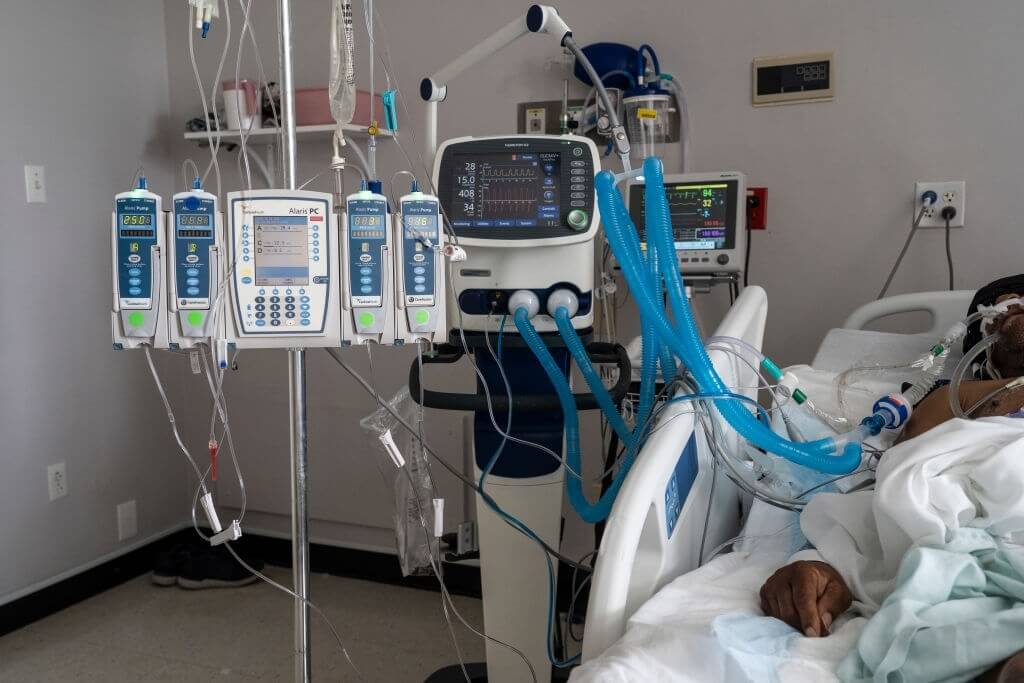Although rising vaccine levels in 2021 decreased COVID-19 hospitalization numbers and, as a result, the requirement for ventilation systems, the Delta variant’s subsequent introduction has once more caused shortfalls in some parts of the US States and several nations.
If the project is effective, healthcare professionals at the two institutions will be able to submit a digital picture of the chest scans to a cloud-based program, where Case Western Reserve’s AI will analyze it and determine if the person will need a respirator.
Researchers Utilize AI To Predict Who Will Require A Ventilator In COVID-19
“That could be important for physicians as they plan how to care for a patient—and, of course, for the patient and their family to know,” said Anant Madabhushi
The Donnell Institute Professor of Biomedical Engineering at Case Western Reserve and head of the Center for Computational Imaging and Personalized Diagnostics (CCIPD). “It could also be important for hospitals as they determine how many ventilators they’ll need.”

Madabhushi plans to use the findings to test the analytical tool in real-time with COVID-19 participants at University Hospital and the Louis Stokes Cleveland VA Medical Center. This can help the hospitals to arrange for the required number of ventilators and also focus on the patients who may need ventilators as per this system. They are treated with alternate options so that they can improve and avoid the need for a ventilator.
Hence in this battle, technology can help the medical fraternity and especially hospitals to a huge extent. However, the efficacy of this forecast is yet to be checked as per sources.
“These can be gut-wrenching decisions for hospitals deciding who is going to get the most help against an aggressive disease,” Madabhushi said.
A Case Western Reserve University researcher has created an online tool to assist healthcare personnel in swiftly determining which COVID-19 individuals may require breathing assistance.
The method, which was built by analyzing CT scans from over 900 COVID-19 individuals identified in 2020, had an 84 percent success rate in predicting the requirement for a respirator.
Until now, doctors have lacked a reliable and accurate method of determining which freshly hospitalized COVID-19 individuals were likely to require ventilation systems, the knowledge that might be essential to clinics with restricted supply. Scientists at Madabhushi’s group began their attempts to develop such a tool by analyzing scans collected in 2020 of nearly 900 individuals from the United States and Wuhan, China, who were amongst the earliest confirmed instances of the rare coronavirus-caused sickness.
“This is important because the computer has given us information that enriches our understanding of the mechanisms in the body against viruses,” he said. “That can play a role in how we develop vaccines, for example.”
In 2012, Madabhushi founded the CCIPD at Case Western Reserve University. And over 60 scientists now work in the laboratory. Graduate students Hiremath and Pranjal Vaidya participated in the study Corredor and Paula Toro, and study faculty Cheng Lu and Mehdi Alilou are all engaged in the most current COVID-19 study.
“This allowed us to find information that may not be obvious by simple visual inspection of the samples,” Corredor said. “These COVID-19-related patterns seem to be different from those of other diseases such as H1N1, a comparable viral disease.”
If paired with other therapeutic research and studies on bigger groups of people, he believes this finding will help to enhance the world’s largest knowledge and possibly other illnesses.
Machine learning and AI approaches enabled the researchers to analyze how particular lymphocytes assemble in the lung cells of some patients, according to GermánCorredor Prada, a postdoctoral fellow in Madabhushi’s laboratory and the writer’s main author.